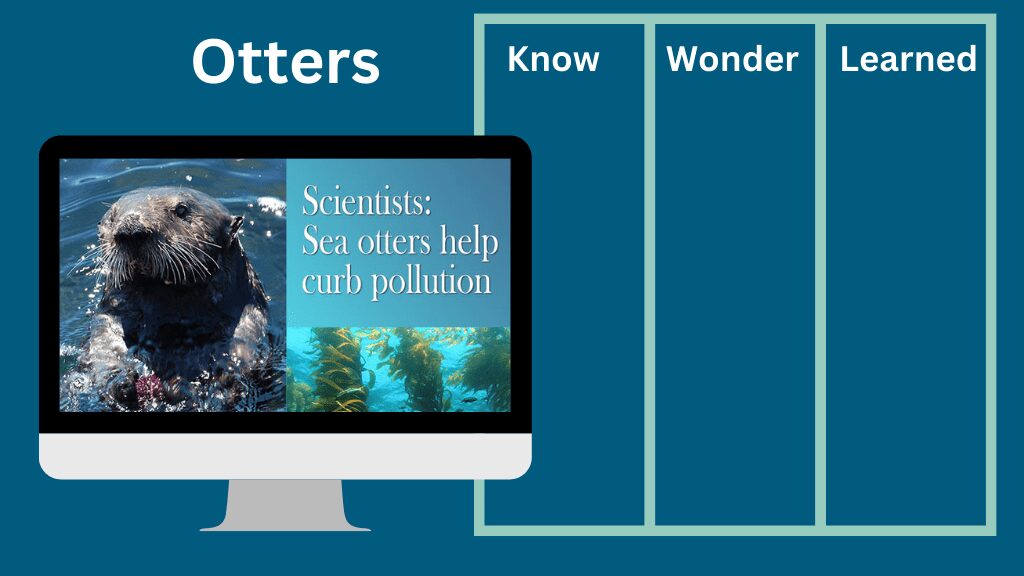Building Background Knowledge with Multimodal Learning
Building background knowledge is crucial to understanding. When learners have a prior grasp of the context and vocabulary of a subject, reading comprehension comes more easily. Add in sensory experiences, and you can make learning sticky by building background knowledge with multimodal learning.
Research by Recht and Leslie illustrates the importance of prior knowledge. In an experiment referred to as,The Baseball Study, students were asked to read a description of a baseball inning and then recreated the action on a model field to demonstrate their understanding. “Students with high reading ability but little knowledge of baseball were not more capable of recall or summarization than students with low reading ability and low knowledge of baseball.”

Recht and Leslie also found that learners with background knowledge on a particular subject are more likely to recall and recognize the important ideas in a text on that subject. Moreover, children who know more about the world have a broader base of background knowledge. Additional research in reading comprehension confirms that “Without background knowledge, even skilled readers labor to make sense of a topic.
Here are practical strategies for building background knowledge, including the use of video as part of multimodal learning.
Assess prior knowledge
Depending on the subject, a group of learners may have varying levels of prior knowledge. Some may have had no exposure, while others may have a large degree of understanding. Assessing this before starting a new unit will help you decide what strategy will be the most beneficial and may provide an opportunity for learners to share their knowledge and experience. Several ways to do this include:
- Stream of consciousness. Set a timer and have learners write or share everything they know about the subject in a brief period of time. The goal is to “brain dump” everything they know about the subject, and conventions like grammar or spelling are not the priority during brainstorming.
- The KWL method.
This is a popular formative assessment strategy that prompts learners to fill in columns at the beginning, middle, and end of a lesson in the categories of know, want to know/wonder, and learned. The K-column provides a window about how learners think and what they want to know.

Create sensory experiences to foster multimodal learning
Incorporating sensory experiences into lessons offers learners an immersive way to explore something new, and activities that engage the senses are those that are most memorable. These experiences can vary greatly depending on subject matter, grade level, and sensory learning needs, but could include:
- Explore textures. Offer items that learners can touch and feel. Examples include different types of rocks for a geology lesson, fabric for a history lesson on clothing, oranges for a lesson on regional crops or baseball equipment when reading Casey at the Bat or reading a current events story on baseball.
- Incorporate Music. Use instruments representative of a subject’s theme or time period. Have learners explore how instruments feel and sound or play music related to the story or topic.
- Introduce Foods and Smells. Food can be a great way to bring lessons to life. Have learners make and enjoy snacks related to a story you’re reading or experience smells such as an old book or spices that played an important part in a historical event.


Build mental models using video
Viewing a video about a subject can help learners build a mental model that they can refer to during class discussions or self-selected reading. A number of resources provide a virtual field trip experience from the convenience of a classroom, or the curriculum you use, may incorporate video, so educators don’t have to spend time searching. This is especially supportive of learners who have physical, sensory, or any combination of impairments that make it hard to access the wider world.
Guest speakers
Inviting a subject matter expert to speak with learners may offer them an additional perspective, and guests may bring equipment they can show or demonstrate. Expert guests might be closer than you think. Consider contacting:
- Local business owners. Contact local business owners whose work relates to your subject. Ask if they would be interested in speaking with learners about what they do and bringing in samples for learners to touch, feel, or see.
- Everyday scientists. There are plenty of people who use science in their daily jobs, even if it doesn’t seem like it. A pastry chef must know exactly how combining different ingredients will react to produce the perfect dessert. For example, a pharmacist has a wealth of knowledge on medications and how they work, and a cleaner knows what chemicals to use to clean certain stains and surfaces.
- Other teachers, coaches, and staff members. If you know another educator, administrator, or school staff member who specializes in the subject you’re introducing to learners, ask if they would be willing to come in and give a guest lecture or demonstration.
Not every learner will have the opportunity to visit another country, taste food from a different region, or even have the experience of smelling an old baseball glove. A multimodal learning approach for developing background knowledge, including using videos, equipment, a variety of print materials, textures, and smells, can not only build background knowledge but also make learning memorable and fun.

